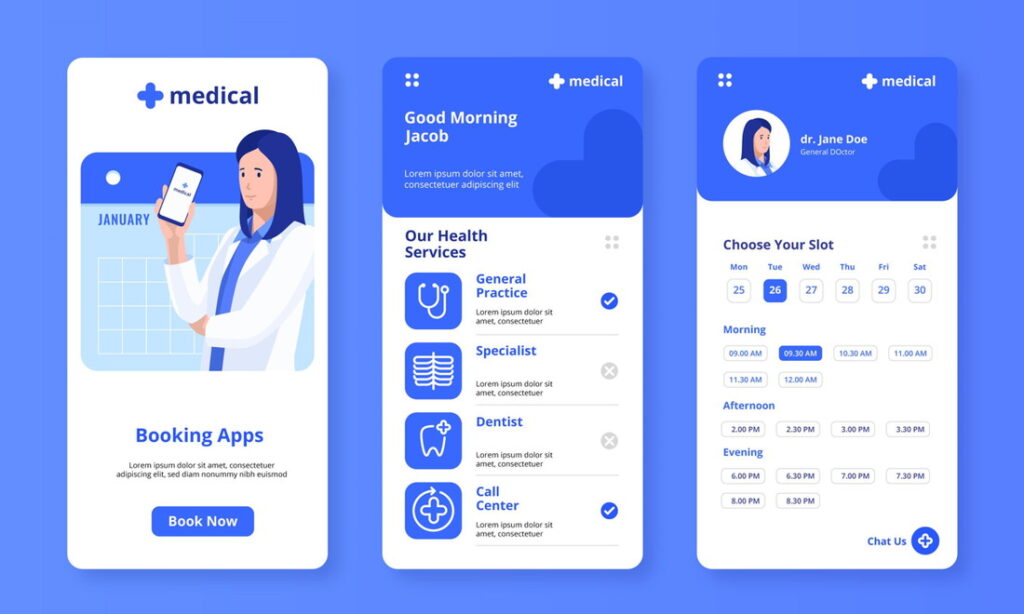Cloud-Based Healthcare Management System Delivers Hospital Workflow Optimization
Workflow Efficiency
Before
After


Key Metrics
Administrative workload reduction by 70%
Objective
- HIPAA compliant Cloud-Based Healthcare Management System
- Boost the hospital’s workflow to the max.
Key Highlights
- A HIPAA compliant Cloud-Based Healthcare Management System was built.
- It boosted the efficiency in healthcare client’s workflow by 61%.
Project Background
Client Background
Client Industry: Healthcare
Location: Phoenix, Arizona, USA
A super-speciality hospital brand in Phoenix, Arizona, USA, was facing challenges in their day-to-day operation, which decreased their workflow efficiency to a mere 30%.
They were using paper-based and offline systems, which led to inefficient diagnosis, delays in treatment, and finally substandard patient experiences.
Objectives:
- Reduce the burden on hospital administration via electronic health records software.
- Boost the patient engagement with the hospital.
- Automation of billing, payments, and insurance processing & claims.
- Improve the overall staff efficiency and decrease regular overtime.
- Bring in HIPAA compliant cloud-based healthcare system to make the hospital ready for the future via the electronic medical record systems.

Challenges
Solution
Solution Provided
- Our project manager and business analyst went on a discovery call with the client to thoroughly understand their challenges.
- Our expert developers crafted a state-of-the-art HIPAA compliant and cloud-based healthcare management system.
- It brought them in concurrence with the digital age.
Strategies Implemented
- We implemented Agile website development technologies to build their hospital management system from the ground up.
- Their healthcare management system was built as a website portal that had features that improved their overall workflow.
- Be it
Automated Appointments & Check-ins (using QR-code),
AI-powered Insurance & Billing (using digital wallets),
Dedicated Patient Engagement (web portal login and follow notifications via text),
AI-powered Data Analysis & Predictive Insights (via past records),
User-friendly interface (to ensure 100% accessibility),
SAP-based Inventory Management and Vendor Management We ensured everything - To facilitate the real-time coordination between staff and hospital departments, their desktop devices were synchronized with the web portal (client-server relationship).
Technologies Used
- Front end Technology : Angular JS
- Backend Technology : Java
- Cloud: AWS
- Third Party Tools for integration: Paypal, Venmo and Stripe were used as payment gateways.
- Ai Functionality: Google AI tools
Development and Implementation
Process
- Our development team, full of experts, built a HIMS (Hospital Information Management System) SaaS portal for the client, basically a web portal to manage all their workflow efficiently.
- It was a challenging task to say the least because most of their day-to-day work was happening on paper.
- The development of HIPAA-compliant HIMS happened in milestones and sprints.
- This allowed the key stakeholders from all departments of the hospital to participate and share their valuable feedback on time.
- This feedback ensured that the final product was delivered on time.
- So, first the cloud-based healthcare management system was built for all the features and functionalities described, and then it was slowly integrated.
- The testing of the healthcare management system happened extensively with hospital staff, patients, chemists, vendors, and insurance agents.
- Finally, when it was working all right, then it was fully brought into use by the hospital staff.
Team Involved
- 1 Business Analyst
- 1 Project Manager
- 1 Frontend Developer
- 1 Backend Developer
- 1 Graphic Designer
- 1 Content Writer
- 1 AWS/ DevOps Engineer
- 1 QA Tester
12 Months
Application Screenshots

Results
Quantitative
Results
- The Admin workload was reduced by 70%.
- AI-driven billing and insurance processing made the whole process 60% faster.
- Overtimes were decreased by 50% due to appropriate time management and collaboration.
Qualitative
Results
- Patients loved the notifications and follow-ups from the hospital.
- Doctors and other hospital staff started bringing in suggestions for further improvement.
Client Feedback
and Ratings
- The hospital couldn’t imagine the way Wildnet Technologies revamped its hospital management system, leveraging the power of its software consulting division.
- It is now one of the USPs, or unique selling points, of the hospital.
Future
Plans
- The healthcare client has asked for IoT-based patient monitoring, AI-powered diagnostic tools, Telemedicine functionalities, and Apps for patients as well as hospital staff.

